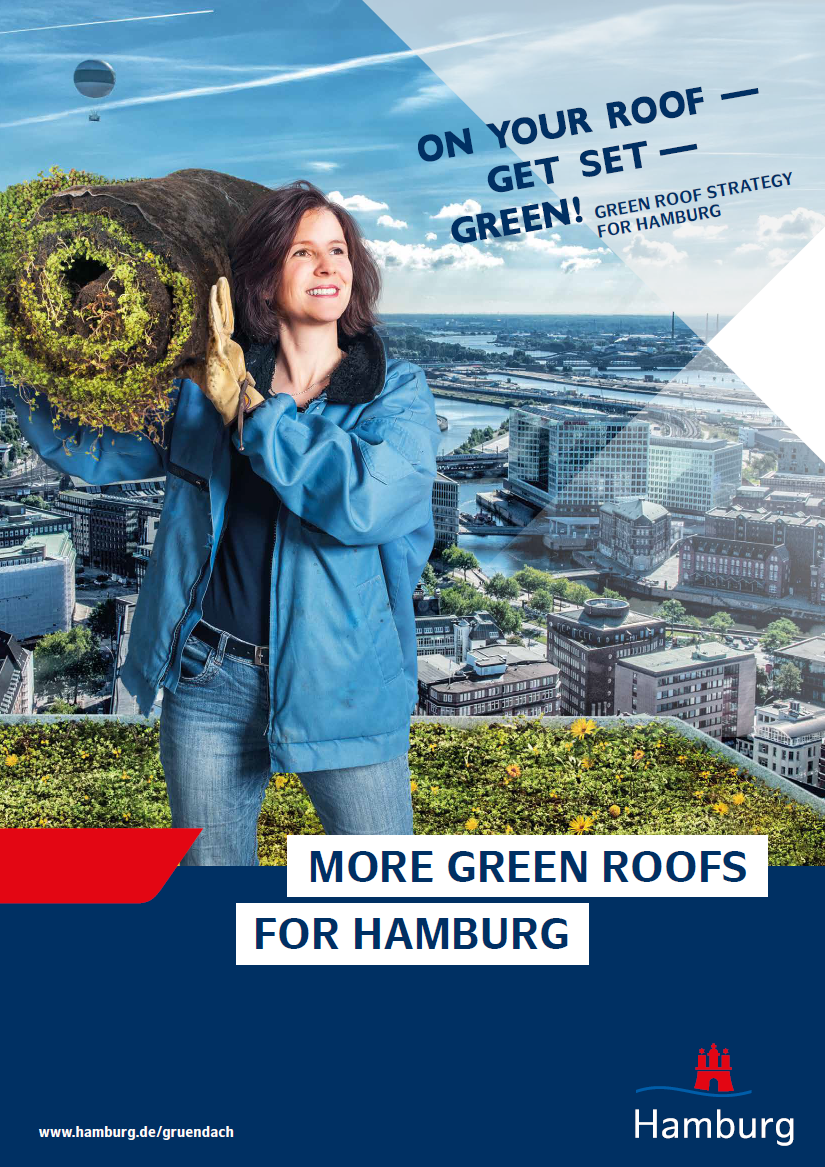
The city of Hamburg in Germany published a dedicated green roof strategy in 2014 with the objective of greening at least 70% of new buildings and existing flat or gently pitched roofs that are being renovated. In total, 100 hectares of green roofs are to be created in the city until 2024 using 3,5 million Euro of dedicated funding. The strategy is comprised of four levels of action: promotion, dialogue, regulation and science. A support programme for new buildings and renovation of existing buildings provides incentives for builders and building owners to green their roofs. In dialogue, interested parties can discuss the benefits of green roofs with planners and representatives of public authorities. Under the aspect of regulation, existing legal instruments are used to promote the expansion of green roofs. The strategy is part of sustainable urban development, climate adaptation actions and fits into Hamburg's "Quality Offensive for Open Space" and complements other rainwater management activities. The city also cooperates with universities to collect data on green roof performance and developing recommendations for their construction. Expected benefits include improvements to human quality of life, biodiversity (through habitat creation), the energy balance of buildings and the city's capacity to retain rainwater as well as reductions to the heat island effect. The strategy thus combines climate change adaptation objectives with those of sustainable urban development.
